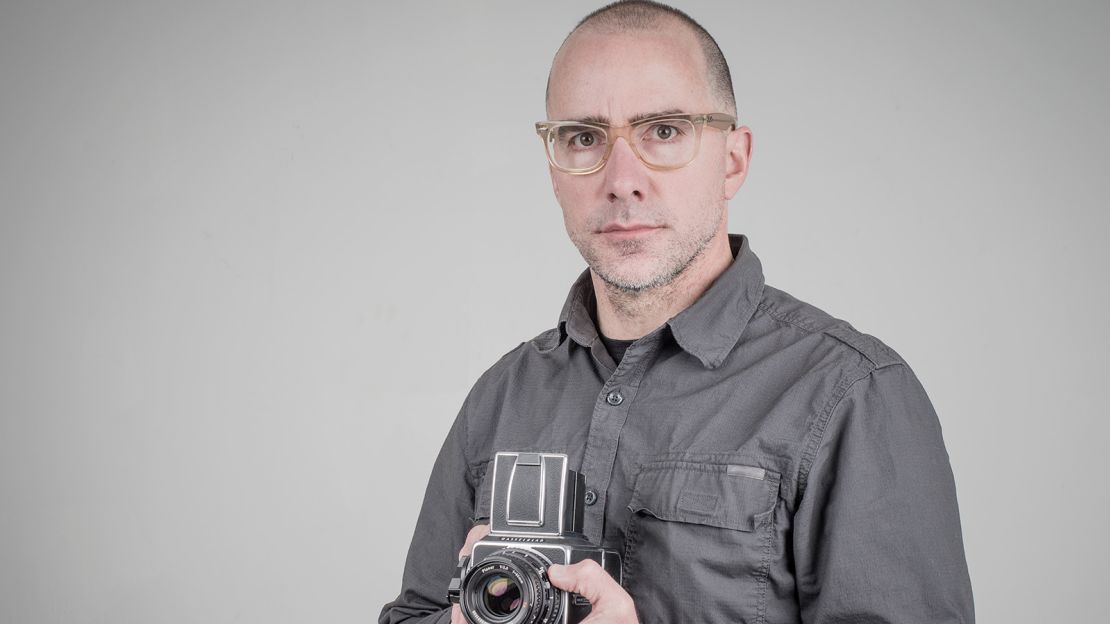Story highlights
Photographer Matt Hamon traveled to rural Montana to document a group of people he calls "the gleaners."
The group sustains themselves by scavenging meat from bison carcasses left by hunters.
The images offer a rare look at a community trying to reconnect to forgotten skills.
With their long beards, plaid shirts and timeless surroundings, they could be part of a folksy fashion shoot for a hip magazine.
If it weren’t for all the blood.
These are what photographer Matt Hamon calls “the gleaners” – a group of people living off-grid in rural Montana, sustaining themselves by scavenging meat from bison carcasses left by hunters.
Hamon, a hunter himself, was scouring the Internet for butchery tips when he came across a member of the group discussing primitive skills and practices.
Intrigued by their tough lifestyle, he sought them out in the dead of winter, when they join the annual buffalohunt on the edge of Yellowstone National Park to harvest animal parts left by Native American hunters.
At first, he said, they were reluctant to be photographed, as most have left behind urban lifestyles to pursue a more natural existence.
“They were somewhat skeptical, I have to say, and guarded,” Hamon said.
Fueling that skepticism was the fact that Hamon’s arrival came on the heels of numerous television producers hoping to document their curious way of living.
“I thought I was going to be uncovering something that maybe hadn’t been photographed or been in the media too extensively,” Hamon said. “But once I arrived at the camp to get to know them, I realized I was really late to the party.”
10 of the world’s most beautiful new nature reserves
Winning their trust

By pitching in with chores, he managed to win their trust, gaining enough access to produce intimate portraits of a group of people living on the fringes of modern society.
He describes them as an ad hoc community of people from different backgrounds and locations who, in some cases, have acquired butchery skills, quit their jobs and moved to the wilderness.
“I think it’s mostly about living closer to the land, to have an immediate relationship to food sources,” Hamon said. “Most of them live off-grid, grow their own food, harvest animals, make ornamental things from the land.
“So it seems to be sort of, not a rejection of the modern culture entirely, but a desire to be closer to what we’ve lost as we became an industrial technological society.”
While they accepted Hamon’s presence, he said, they remained cautious.
“They’re super guarded around their names, for instance. They asked me just to use their first name. Some have adopted names to distance themselves from the life they grew up in.”
Hamon’s images are striking.
They show men and women – sometimes accompanied by a baby – armpit-deep in the gore produced when skinning, gutting and slicing up huge beasts.
Shot with a large-format, high-resolution camera, often using an off-camera light, they intentionally resemble classical paintings in both tone, color and framing.
Hamon also acknowledges the resemblance to hipster fashion shoots.
“It’s accidental that there’s a style of fashion that’s in vogue now that’s the bearded, flannel-wearing lumberjack look,” he said. “I think that makes the images poignant to a degree, because as you look closer, you see the details: blood caked upon hands, dirty fingernails.”
What impressed him, he said, is the group’s resourcefulness, which reflects but does not imitate traditional Native American practices.
“On my first night there they served me buffalo liver pate, which was made from livers scavenged from the field and sweet potatoes. I was skeptical, but it was delicious.
“I was surprised at how efficiently and detailed their dismantling of the carcasses was. As a hunter myself, I’ve observed other hunters and there’s so much waste without those skills.”
Hamon said that while he once believed hunting involved cruelty, he’s since observed a relationship between hunter and animal – particularly among Native Americans – that has “greater legitimacy” than that between most Westerners and their food.
“There’s a degree of intimacy and respect here that radically outdistances the Chicken McNugget,” he said.
Hamon said his time with the “gleaners” had at least a temporary impact on his own day-to-day life.
“We were gathering and scavenging food, cooking it that evening for the meal in a daily routine more associated with the arc of the sun and the movement of animals.
“So when I did return to the urban lifestyle that I live now, I did go through a culture shock and a strangeness, shifting back to a system when the day is governed by an alarm clock and schedule.”
In Montana, Anthony Bourdain finds big sky, big hearts
Photo escape: Check out of the political world, check in to the natural world
Matt Hamon is a photographer based in Potomac, Montana. You can find him on Visura and follow him on Facebook and Tumblr.










